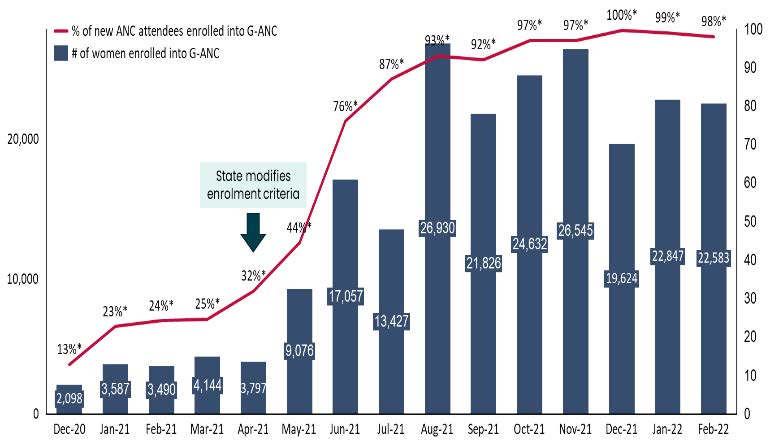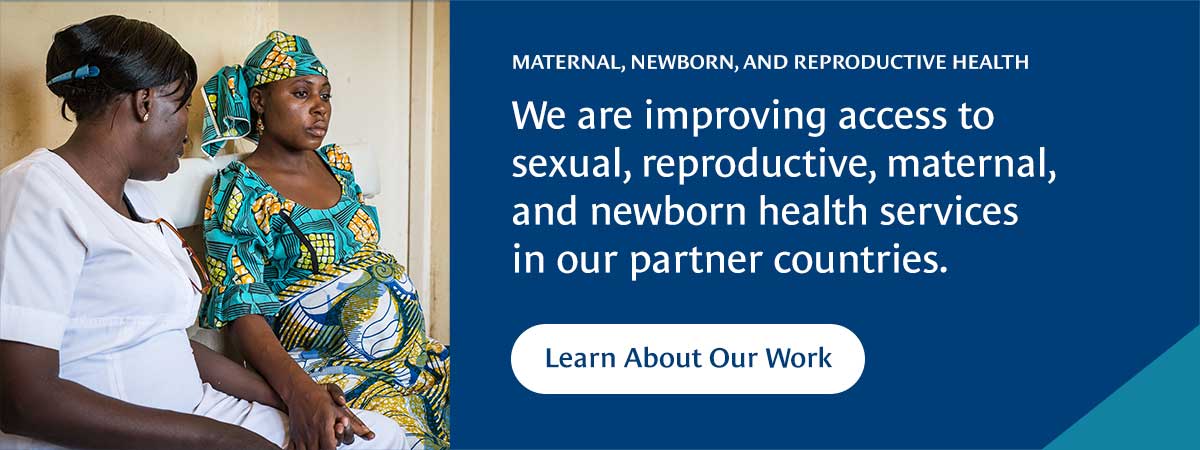Before Kano State used the responsive feedback mechanism to improve the quality of antenatal care services in health facilities, few pregnant women knew of and used the services.
Less than 20 percent of pregnant women in Kano State, Nigeria deliver their babies at a health facility, and only 51 percent of expectant mothers complete at least four antenatal visits during their pregnancy. The use and quality of antenatal care (ANC) is low in Nigeria. However, Group ANC (G-ANC) is a proven model to improve clients’ experience and uptake of ancillary reproductive, maternal, newborn, and child health (RMNCH) services.
The Clinton Health Access Initiative (CHAI) with support from TAConnect, provided technical assistance to the Kano State Primary Health Care Management Board (KSPHCMB) to adopt G-ANC as an alternative model to traditional ANC methods to drive uptake.
The board with CHAI support, used the responsive feedback mechanism, which emphasizes continuous improvement, to inform program redesign to facilitate the uptake of G-ANC.
The board held a stakeholder meeting at the inception of the program and facilitated pregnancy-related assessments to understand key gaps and bottlenecks to the uptake of ANC from the community to all levels of health service delivery. Based on the findings, we helped develop training and educational tools to motivate behavioral change among pregnant women and improve communication and support functions at ANC contacts for better overall pregnancy outcomes. The board instituted periodic mentoring of healthcare providers, and engagement with beneficiaries through client exit surveys, to inform adaptations of the model throughout the trial period.
Following the initial phase of implementation, the established processes revealed low enrolment of pregnant women into G-ANC cohorts. This prompted the review of the approach by key stakeholders across the Ministry of Health, service providers, and existing community structures. The meeting concluded that the pre-defined criteria of allowing only pregnant women between 16 to 20 weeks of pregnancy to be enrolled into cohorts restricted the number of women enrolling in the program and limited coverage of RMNCH counseling. They came up with the following solutions, which were later endorsed by the State:
- The removal of gestational age limits to ensure the participation of all pregnant women.
- The introduction and rollout of an abridged RMNCH communication tool that is easier to understand and implement.
Following the rollout of the modified enrolment, communication, and counseling approach, there was an influx of pregnant women into G-ANC services. Over 220,000pregnant women enrolled in 18,406 G-ANC cohorts, a six-fold increase from 13 percent in December 2020 to 98 percent in February 2022. There was also a corresponding 25 percent increase in the number of pregnant women counseled on essential RMNCH services, a 15 percent increase in the number of facility deliveries from Q4 2020 to Q4 2021, and a 113 percent increase in the number of postnatal care clinic visits.
“Unlike regular ANC, G-ANC has introduced a lot of approaches to get women to open up about their problems anonymously. We have learned to measure the weight and BP [blood pressure] of each other. I hope this program continues for many years to come so other women can benefit as well.” Fatima Abbas, G-ANC Beneficiary

Fig 1: shows the increased influx of pregnant women into G-ANC cohorts
To sustain the gains achieved, the KSPHCMB has integrated the modified G-ANC approach into existing policy, state RMNCAH+N strategy, and operational plans. In addition, existing state funding streams have been leveraged to support continuous on-the-job learning and mentoring exercises across facilities to promote continuous use. In conclusion, when used to guide program implementation, responsive feedback results in improved program outcomes, increased ownership, and sustainability of solutions.






